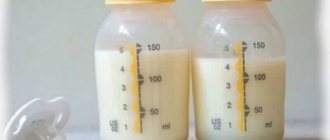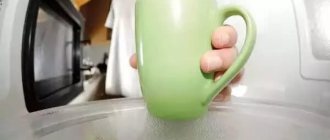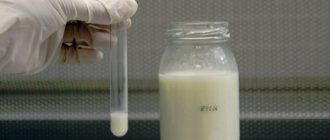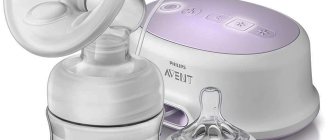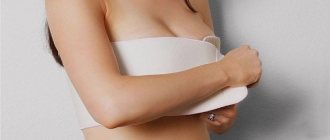Features of storing and heating breast milk
Breast milk contains elements important for the baby's development: oligosaccharides, beneficial bacteria, antibodies and proteins. In order to preserve them to the maximum, you should familiarize yourself with the specifics of its storage and heating.
There are several options for storing breast milk:
- room storage conditions;
- chilled look;
- frozen state.
Room storage conditions depend on temperature. If it is from 18 to 21 ºC, expressed milk should be stored for 6 hours, and in the case of a constant average temperature of 23 to 25ºC - no more than 3 hours.
In the refrigerator, expressed milk remains healthy for a week.
The nutritional properties of milk are preserved, but the immune benefits are partially lost if it is stored frozen. However, it still remains more useful than factory-made infant formula. In the freezer compartment, at temperatures down to -16 ºC, the shelf life is up to 3 months, and at temperatures up to – 19 ºC, up to 6 months are possible. Be sure to indicate the freezing date.
Regardless of the storage method chosen, it is important to choose the right container. Which, when heated and cooled, does not affect the composition of the product. Conditions for choosing containers:
- sterility;
- presence of a measuring scale;
- Tight screw cap.
The required container can be easily found at a pharmacy or specialty store. For storage in the freezer, it is convenient to use specially designed bags and containers. They are not damaged by freezing and have a measuring scale. The downside is the high cost and the fact that the bags cannot be reused. Do not forget to sign the date of expression of the product in order to comply with shelf life.
We recommend reading: How to increase the fat content of breast milk
The shelf life of food is significantly influenced by sterilization of containers. If reusable containers are used, they must be sterilized before each use. To do this, you need to heat the water to a boil. When steam appears, hold the storage container over it for 3 - 5 minutes. Lids should also be sterilized. Some modern heating appliances are equipped with this useful feature.
Once cooled and frozen, breast milk can be heated. To do this, you need to choose one of the methods: a water bath, running water or special electrical appliances.
The main thing is to follow the rules and sequence of preparing food for consumption:
- Frozen breast milk must thaw in the refrigerator before heating;
- do not expose the product to direct fire;
- re-freezing is not possible;
- expressed milk should not be boiled, maximum heating temperature is 37ºC;
- Before feeding, shake the filled container so that its temperature becomes uniform.
Heating
Next, milk from the refrigerator or defrosted is treated the same way. The optimal temperature for feeding a baby is 36-37 degrees.
The easiest way to warm up milk is to simply place the container under running warm water. Its temperature should not exceed 40 degrees. The heated milk must be stirred.
Milk can also be heated in a water bath. You need to pour water at a temperature of 36-40 degrees into any convenient container. Place the bottle there and wait for the milk to warm up. To determine the temperature of milk, and then complementary foods, it is convenient to have an infrared thermometer.
You can use special bottle warmers. They themselves control the temperature of the liquid and turn off in time. It is impossible to overheat milk in a working heater.
Which of these methods is better? Any one can be used. Just don’t overheat the milk and don’t forget to stir it.
Warming breast milk using running water
Warming up expressed milk after storing it in the refrigerator is not difficult. The easiest way is heating with warm running water. To do this, remove the container with milk from the refrigerator and place it under running water at room temperature, gradually increasing it. During the process, turn the bottle over so that the breast milk warms up evenly. Avoid high temperatures because hot water can destroy all the benefits of breast milk. Heating should be uniform and gradual. It is worth considering that this method is the longest of all, it can take up to 10-15 minutes.
To properly reheat expressed breast milk after it has been frozen, it must be placed in the refrigerator to defrost. And then use heating using running water. It is important to make sure that there are no ice crystals in the milk.
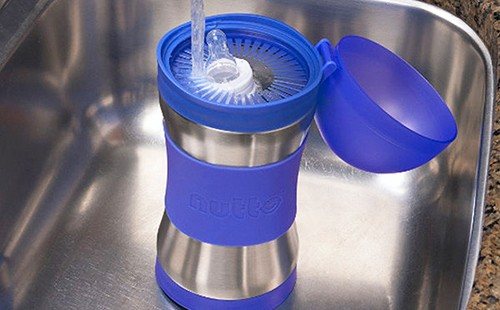
How can you freeze breast milk?
Mothers often ask the question: “is it possible to freeze breast milk in a bottle”? It is possible if you rarely express milk, but it is better to purchase special containers, which can be purchased in children's stores, pharmacies or through online stores. Breast milk should be stored in the containers listed below.
Container for storing expressed breast milk
— Bags made of dense polyethylene that do not react with breast milk.
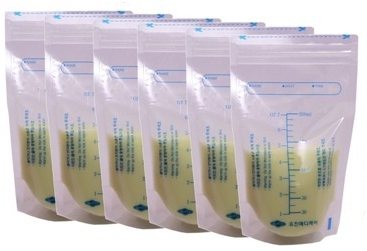
— Glass bottles with metal or plastic caps.
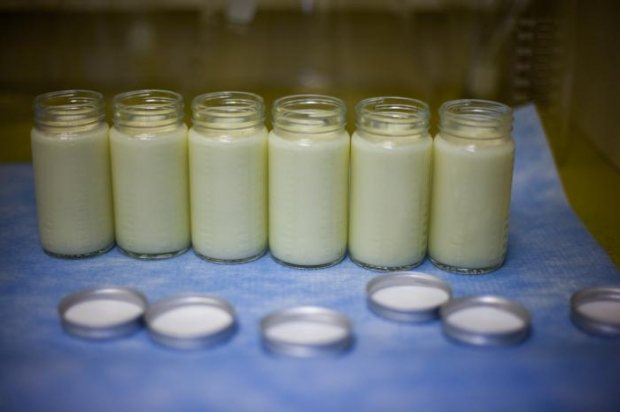
— Plastic containers for storing expressed milk.

— Plastic jars and bottles.
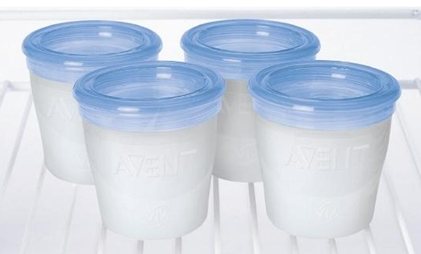
Requirements for containers for long-term storage of expressed milk
Dishes for long-term storage of expressed milk must meet the following criteria:
- Be sterile.
- Close tightly.
- Be strong.
- Have a measuring scale.
- Easy to use. For example, special disposable bags for storing expressed milk are already sterilized, can be easily sealed, do not take up much space in the refrigerator, and they also have a paper insert where you can write down the date and name of the child (the name is written if stored with the milk of other women).
— Safe and unchanged quality of milk. According to studies, expressed breast milk can be stored in both glass and plastic containers; these materials do not affect the composition and quality of the milk.
The popular La Leche League book, The Breastfeeding Answer Book, recommends the following order for storing expressed breast milk:
1. Glassware for storing expressed breast milk.
2. Dishes made of transparent hard plastic (polycarbonate).
3. Dishes made of opaque plastic (polypropylene) composition.
Using a water bath
A water bath is often used to warm breast milk. Fill the pan with water ½ volume and set to heat. When the water boils, remove the pan from the stove. To ensure that the bottle of food heats evenly, place a second pan in the pan and pour water into it. Place a container with chilled food in the water of the second pan. In 6-10 minutes it will reach the required temperature.
We recommend reading: Milk crisis during breastfeeding
There is also another good option. Place a container of water on the fire, place a colander, and put a bottle of food in it and cover with a lid. The steam will quickly heat the container, so you should monitor the process carefully. The bottle of product must be turned over periodically. Frozen milk should first be thawed in the refrigerator.
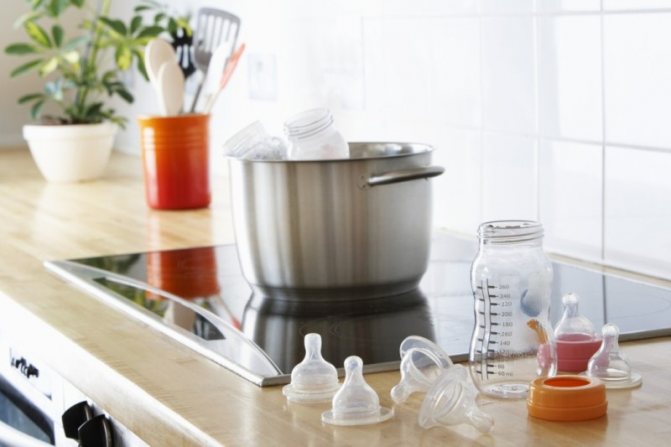
Using the Heater
The use of special modern devices for heating breast milk greatly simplifies the process of preparing for feeding. There are a variety of heaters on the market. The main advantage of using a heater is that it is impossible to overheat the container with the product. After reaching the required temperature, the device automatically turns off. Also, heating is carried out more evenly, which has a positive effect on quality. In addition to the difference in cost, they differ in their functionality:
- heat one or more bottles at the same time;
- equipped with several temperature settings for heating;
- suitable for heating not only milk, but also complementary foods;
- different times to reach the optimal temperature of the product;
- versatility - some heaters are suitable for heating any baby bottles, and some are exclusively for the company of the same name;
- heating method - steam or water;
- the presence of a function for defrosting or sterilizing bottles.
For mothers who often travel with their children in personal vehicles, it is convenient to use a heater powered by the car’s cigarette lighter.
Water bath heaters use hot water for heating. The water is first heated in the container, then a bottle of food is placed there.
We recommend reading: How to strain breast milk after childbirth
Steam heaters also require water to operate. However, the device heats the liquid to such a temperature that it turns into steam. The steam then heats the container containing the expressed milk. The advantage of a steam heater is that heating occurs gradually and evenly.
For steam and water heaters, there is a general rule: water for heating is used once, and after each portion of power it must be changed.
Heaters are also used to warm up complementary foods, if there is a special compartment.
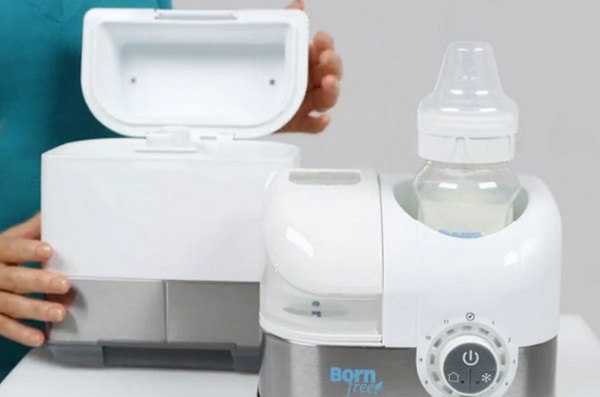
How to heat milk
If the milk was in the room, then there is no need to heat it. But if the room is quite cool, then you can warm it up a little. There are several types of heating, each of them is convenient in its own way. Of course, when frozen and then defrosted, a lot of useful substances are lost. But at the same time, the majority remains, and most importantly, mother’s milk is preserved, which is much better than artificial formula.
In running water
This method is the simplest and most convenient. It is available in almost any situation. For this, the container must be placed in a wider bowl and watered with hot water. The milk is heated. But it's worth making sure it doesn't get too hot.
The undoubted advantage in this case is the method’s low cost, simplicity, and accessibility. But it can take quite a long time to reheat this way, especially if it’s frozen.
In the microwave
This method is quite controversial. Many are against it because they believe that the waves emitted during microwave operation are harmful and negatively affect the quality and benefits of milk. But there are also those who see nothing wrong with this. It’s probably only a plus, since the milk heats up there the fastest.
Adviсe
- When storing breast milk in the refrigerator, it is not recommended to place it on or near the door. The temperature here is slightly higher, this will shorten the shelf life of the product.
- On the contrary, it is recommended to thaw frozen breast milk in the refrigerator so that this process happens faster, placing it closer to the door.
- It is recommended to warm breast milk gradually after removing it from the refrigerator. Raising the water temperature from cool to the desired temperature.
- Breast milk must be cooled before freezing. Reheating breast milk is not permissible, this is due to the fact that such a product will not bring benefits to the baby’s health. Consequently, the meaning of pumping is lost. The best option would be to divide the food into optimal portions in advance.
- Even if breast milk has been stored at room temperature, the need to reheat remains. The optimal feeding temperature for a baby is 36ºC.
- In order to understand whether the product has reached the desired temperature or not, just drop a drop on your wrist.
- The shelf life of heated milk is reduced to 1-1.5 hours compared to expressed milk.
- Milk retains its properties only if the container is well sterilized. Neglecting this condition is fraught with premature souring and spoilage of the product.
- During long-term storage, milk may separate into fractions. This is not a sign of spoilage and should be shaken before use.
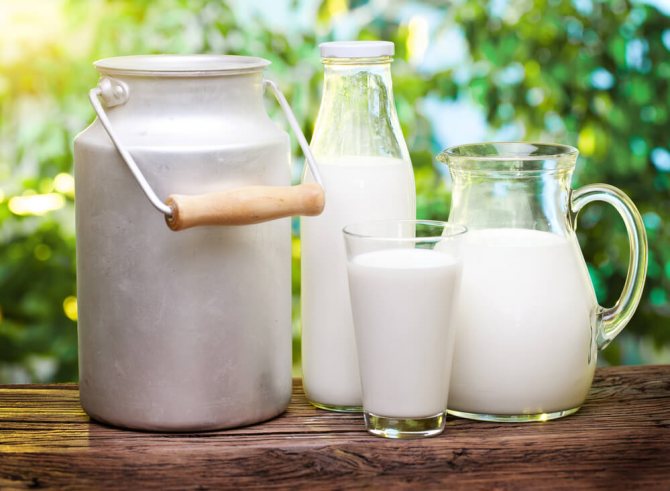
How to defrost breast milk
If the mother is absent for a long time and the expressed milk had to be frozen, then it must be defrosted correctly. It is best to do this in the refrigerator - yes, it takes longer, but with gradual defrosting the maximum benefits will be preserved. You can defrost at room temperature, but make sure that the room is not too hot, otherwise the already melted milk will begin to sour. Until there is no ice left in the milk, do not start heating it. Subjecting milk to emergency defrosting and immediately boiling it is absolutely wrong. As a last resort, you can speed up the defrosting of ice in milk by immersing the container in slightly warm water or placing it under a stream of summer water.
Breast milk should never be re-frozen. Of course, there will be no use left in it. If defrosted, such milk can even be dangerous for the baby. Better pour it out.
